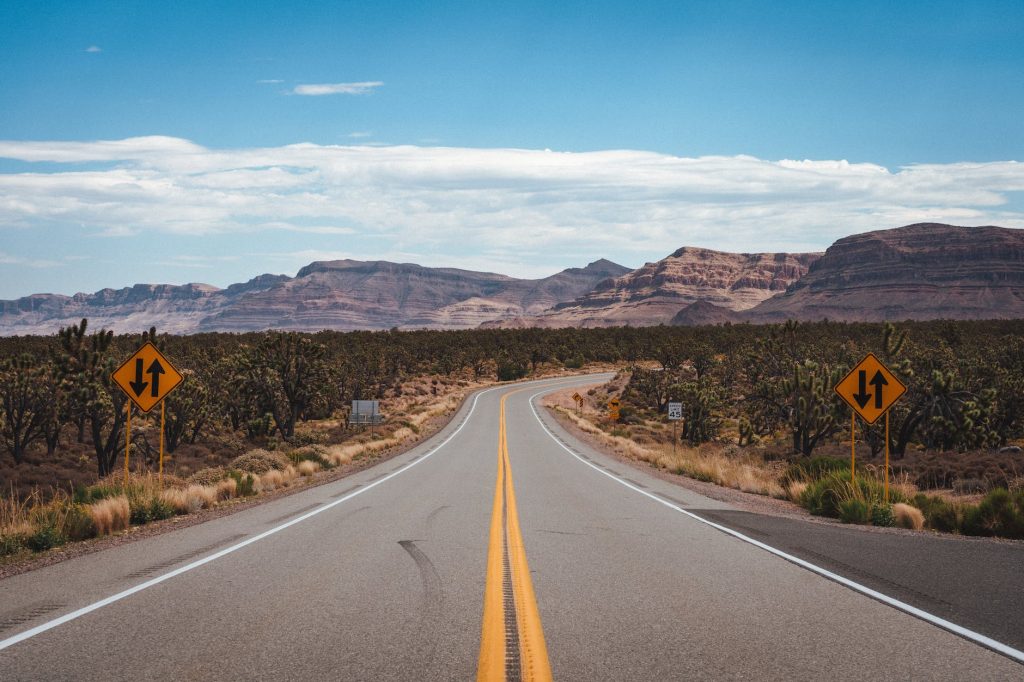Picture this: You’re cruising along Nevada’s Route 50, the “Loneliest Road,” surrounded by vast desert landscapes and peculiar sights. But then, your trusty steed decides to take a siesta right in the middle of nowhere. What now? In this comprehensive guide, we’ll not only tackle vehicle breakdowns but also address other essential aspects of a journey down Route 50.
1. The Roadside Picnic: Fuel and Food
Running low on fuel? It’s a common dilemma on this desolate stretch. Service stations can be sparse along Route 50. On average, you can find a gas station roughly every 50 miles. However, given the vastness of the route, it’s wise to ensure you have a full tank before embarking on this journey. When it comes to food, diners and cafes along the route often serve up hearty American fare, including burgers, pies, and classic roadside dishes. These establishments often offer a taste of local flavors, reflecting the unique culture of the areas you’ll pass through.
Moreover, the availability of fuel and food can vary depending on the specific section of Route 50 you’re traversing. For example, the stretch between Ely and Fallon, known as “The Loneliest Road in America,” has fewer amenities. Travelers should be prepared by keeping extra snacks, water, and a detailed map of the route to anticipate where they might need to refuel and refuel their own energy.
2. Communication Woes? Not on Route 50:
Being remote doesn’t mean you’re out of touch. Travelers on Route 50 faces communication challenges due to the remote nature of the road. Carrying a satellite phone or emergency communication device is advisable. These devices allows you to reach out for help or stay in contact with loved ones, providing a crucial lifeline in the event of an emergency. However, with advancements in technology, portable Wi-Fi hotspots became more accessible, allowing travelers to stay connected and access information even in the most isolated areas.While traveling the remote stretches of Route 50, having access to an online speedometer can be a valuable tool for maintaining a safe and steady pace.
Nevertheless, it’s important to note that even with modern communication devices, some sections of Route 50 may still have limited cellular coverage. It’s essential to check your connectivity before heading out and have backup communication methods. Furthermore, carrying a physical map or guidebook can be invaluable, especially if you plan to venture onto the numerous side roads and trails that lead to hidden gems and natural wonders along the route.
3. Surviving the Elements: Emergency Preparedness
When you’re out in the wild, it’s essential to be prepared for the unexpected. Nevada’s desert terrain is known for extreme weather fluctuations. Temperatures during the summer could soar well above 100°F (37.8°C), and in the winter, nighttime temperatures often dropped below freezing. It was crucial to check weather forecasts and carry appropriate clothing, especially if you planned to explore nearby national parks like Great Basin. Staying hydrated in the desert was a must, with experts recommending at least one gallon of water per day per person. Emergency kits should include first-aid supplies, a flashlight with extra batteries, and tools for basic repairs. Additionally, it was advisable to make sure someone knows your travel plans and expected return date.
4. Mother Nature’s Mood Swings: Dealing with Extreme Weather
Route 50’s desert terrain can present significant weather challenges. In the summer, it’s known for scorching temperatures that could reach over 100°F (37.8°C). On the flip side, winter nights in the desert often dropped below freezing, demanding warm clothing and preparation for icy conditions. Staying informed about weather forecasts before hitting the road was essential. It’s also important to be ready for sudden weather changes, which are not uncommon in the desert.

5. Finding Shelter and Sustenance: Food and Accommodations
If your vehicle breakdown becomes an overnight ordeal, knowing where to find shelter and sustenance is vital. Travelers had various options for accommodations along Route 50. You could choose to stay in motels or campgrounds, or even explore unique bed and breakfast establishments. These accommodations offered weary travelers a chance to rest, refresh, and prepare for the journey ahead. Some areas along the route, such as Ely, offered a blend of modern comfort and historical charm.
6. SOS Signals and Hitchhiking Hints
Couple of years ago, understanding emergency signals was crucial when you were in need of help. Three short blasts on the horn were recognized as an international distress signal, while flashing your headlights at night indicated you needed assistance. Additionally, some travelers occasionally resorted to hitchhiking in case of breakdowns. Hitchhiking was often done cautiously, and it was essential to use good judgment when accepting rides from fellow travelers. Fortunately, the sense of camaraderie on Route 50 was such that people often stopped to help their fellow adventurers.
7. MacGyver Skills and the Tire Tango
Embrace your inner MacGyver and dance the “Tire Tango.” In the event of a flat tire, knowing how to change it was essential. Ensure you have a jack, lug wrench, and spare tire on hand, and be prepared to tackle this task if needed. In addition to dealing with flat tires, having basic vehicle repair knowledge, such as jump-starting a car or fixing minor engine issues, could be invaluable in a remote situation.
8. Staying Calm and Laughing It Off
Embrace the absurdity of the situation. When facing challenges on Route 50, it’s important to stay calm and composed. In the end, it’s often the unexpected detours and mishaps that make for the most memorable and entertaining stories. Laughter can be a powerful tool for coping with adversity. Share a good laugh with your fellow travelers or with the locals you meet along the route. The unique characters and situations you encounter on Route 50 can turn an unexpected breakdown into a humorous anecdote.
Moreover, Route 50 is not just about the destination; it’s also about the journey. The road itself is part of the adventure, offering awe-inspiring vistas, quirky roadside attractions, and a sense of isolation that’s hard to find elsewhere. Take time to appreciate the solitude and the sense of being on a path less traveled. The silence of the desert and the vastness of the landscape can be a form of therapy, allowing you to disconnect from the stresses of modern life.
9. Local Legends and Folklore Along Route 50
Beyond the mechanical mishaps and weather challenges, Route 50 is known for its share of legends and folklore. As you traverse the Loneliest Road in America, you might hear about the “Highway of UFOs.” The stretch near Area 51 and other mysterious locations has fueled tales of extraterrestrial encounters. While it’s unlikely you’ll spot little green men, the stories can add an extra layer of intrigue to your journey.
Moreover, the “Bazooka Gold Trap” legend is a fascinating part of Route 50’s history. In the 1940s, an ad proclaimed, “Free Maps to Buried Treasure,” and thousands fell for it. As the story goes, travelers were duped into buying maps that led to a supposed hidden treasure in the desert. While these tales might not lead you to riches, they’re a testament to the road’s enigmatic reputation.
10. Embracing Solitude: Mindful Moments on the Loneliest Road
Route 50 offers a unique opportunity for mindfulness and self-reflection. The vastness of the desert and the sparsity of human presence create a canvas for introspection. Take moments to step out of your vehicle, feel the desert’s silence, and soak in the extraordinary views. Whether you’re sitting under a star-filled sky or witnessing a sunrise over the Great Basin, the solitude of Route 50 can be a transformative experience.
Additionally, if you’re a fan of literature, you might appreciate the connection to authors who found inspiration along this road. As you journey through Nevada’s heartland, remember that the renowned American author Mark Twain once traveled similar landscapes. His descriptions of the region in “Roughing It” capture the timeless essence of the American West, which you can still witness on Route 50 today. So, don’t rush through; take your time to appreciate the literary and natural heritage of this iconic road.




